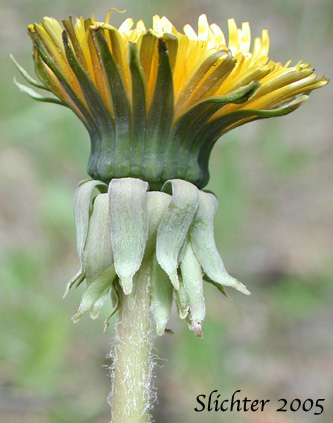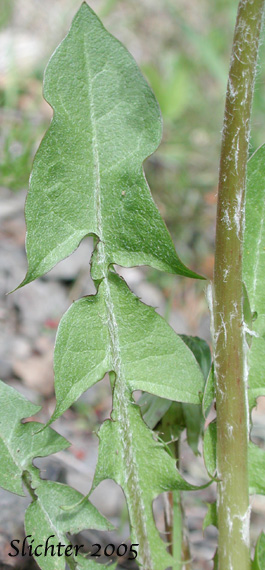 -
- 
 -
- 
The dandelion is a widespread, weedy species, which is both loved and hated as a plant. We are familiar with it as a pesky weed in the yard, yet the seed heads are popular "toys" for children who blow away the parachute-like seeds. Yet it is also a gourmet food crop, with the leaves, roots, and flowering heads all delicious. The roots are used as a coffee substitute, the leaves for an herbal tea or as a table green, and flowers are used to make dandelion wine.
The leaves are all basal. Individual leaves are oblanceolate and generally glabrous or smooth surfaced, except for some hairs on the midrib on the lower leaf surface. Leaves are generally 6-40 cm long and 0.7-15 cm wide, generally lobed or pinnatifid. The terminal lobe tends to be the largest. The leaf tapers to a winged petiolar base. The stem is how, smooth-surfaced, and from 5-50 cm tall. A single flower head is found atop each stem. The involucre is from1.5-2.5 cm tall, with the inner bracts at first erect, then reflexed with age. The outer bracts are slightly wider and reflexed. The head terminates in numerous ray flowers. The seed heads are globose, bearing many tiny, parachute-like seeds which are wind dispersed.
Dandelions are found in disturbed areas, especially waste places, yards, or heavily grazed fields.
Dandelions are found over much of North America and in fact may be one of the world's most widespread plants. They are found throughout the gorge.